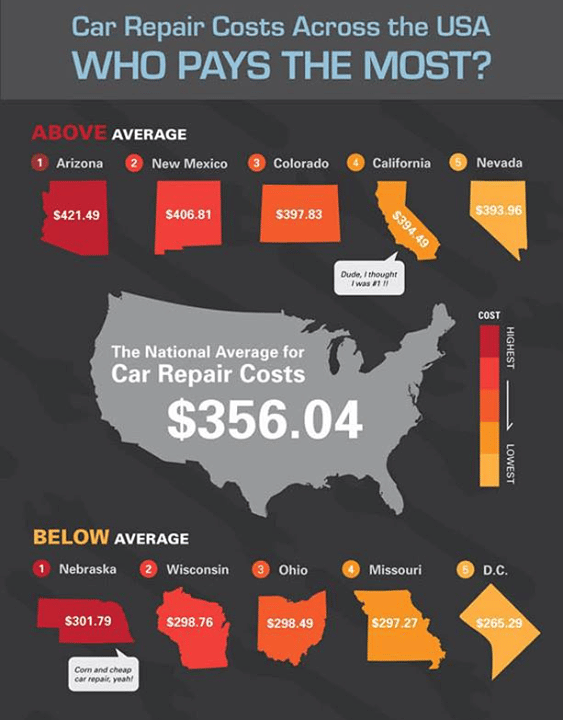However What's The Repair For Spongy Brake Pedals? Discover The Service Listed Below!
However What's The Repair For Spongy Brake Pedals? Discover The Service Listed Below!
Blog Article
Web Content Writer-Maddox Brooks
When it comes to your vehicle's brake system, recognizing usual concerns can save you from potential safety and security dangers. From identifying brake pad wear to addressing brake liquid leakages, recognizing how to deal with these troubles is vital. But what regarding those squishy brake pedals? There's a fix for that also. Keep tuned to get more information about these concerns and the useful remedies that can keep you safely when driving.
Brake Pad Put On and Substitute
When it comes to preserving your vehicle's brake system, one vital facet to keep an eye on is the wear and substitute of brake pads. Brake pads are important elements that press versus the brake blades to decrease or stop your car. In time, these pads wear down because of friction, calling for regular evaluation and substitute to ensure your brakes operate effectively.
To establish if your brake pads require substitute, pay attention for shrieking or grinding noises when you use the brakes. Additionally, if your car takes longer to quit or you see resonances or pulsations when stopping, it might be time to change the brake pads.
Ignoring used brake pads can bring about decreased braking performance, damage to other brake components, or perhaps brake failure.
Changing brake pads is a relatively simple process for numerous vehicles. Nevertheless, if browse this site or uneasy executing this task, it's finest to consult a specialist technician to make sure proper setup and optimal brake efficiency.
Routinely examining and changing brake pads is essential for your safety and the longevity of your vehicle's stopping system.
Brake Fluid Leaks and Maintenance
To guarantee your car's brake system functions efficiently, it's important to likewise take note of brake fluid leakages and upkeep. https://cristianjasja.wssblogs.com/29279825/your-ultimate-guide-to-self-performed-oil-modifications-required-tools-expert-advice-and-timing-methods is crucial for transferring the force from your foot on the brake pedal to the real stopping system. One common issue with brake liquid is leaks, which can occur due to scrubby brake lines, seals, or links. If you discover a puddle or leaks under your car, it's necessary to deal with the leakage immediately to stop a prospective brake failing.
Frequently examining your brake liquid level is essential to keeping your brake system. Reduced brake fluid can cause air entering the brake lines, which jeopardizes braking performance.
In addition, old or contaminated brake liquid can affect the total effectiveness of your brakes. https://www.kbb.com/car-news/war-in-ukraine-halts-some-porsche-vw-production/ 's recommended to follow the producer's standards on when to transform the brake fluid, generally every 2 years.
Spongy Brake Pedal: Blood Loss Brakes
If you've ever before experienced a spongy brake pedal while driving, you understand the significance of keeping a company and responsive stopping system. One usual root cause of a squishy brake pedal is air caught in the brake lines. When air gets in the brake system, it can cause a loss of hydraulic pressure, resulting in that disturbing mushy feeling when you press the brake pedal.
To solve this concern, bleeding the brakes is required. Bleeding the brakes involves removing the air from the brake lines to recover correct hydraulic pressure.
To hemorrhage the brakes, you'll need an assistant to assist you. Start by locating the brake bleeder shutoff on each wheel, usually located near the brake caliper. With a wrench, loosen up the valve and have your assistant press the brake pedal while you observe any kind of air bubbles appearing. Repeat this process for each and every wheel, starting from the wheel farthest from the master cylinder and relocating closer.
Once you no longer see air bubbles and only clear liquid emerges, tighten up the valve and top up the brake fluid reservoir as required. Bleeding the brakes assists make sure a company brake pedal and improves total braking performance.
Conclusion
Now that you understand typical brake issues and how to fix them, you can ensure your car's security and efficiency. Bear in mind to listen for warning signs like shrilling noises or squishy brake pedals, and address them without delay. Regular upkeep and prompt replacements are key to keeping your brakes in leading problem. Stay positive and mindful to your brake system to delight in safe and trusted driving experiences.
